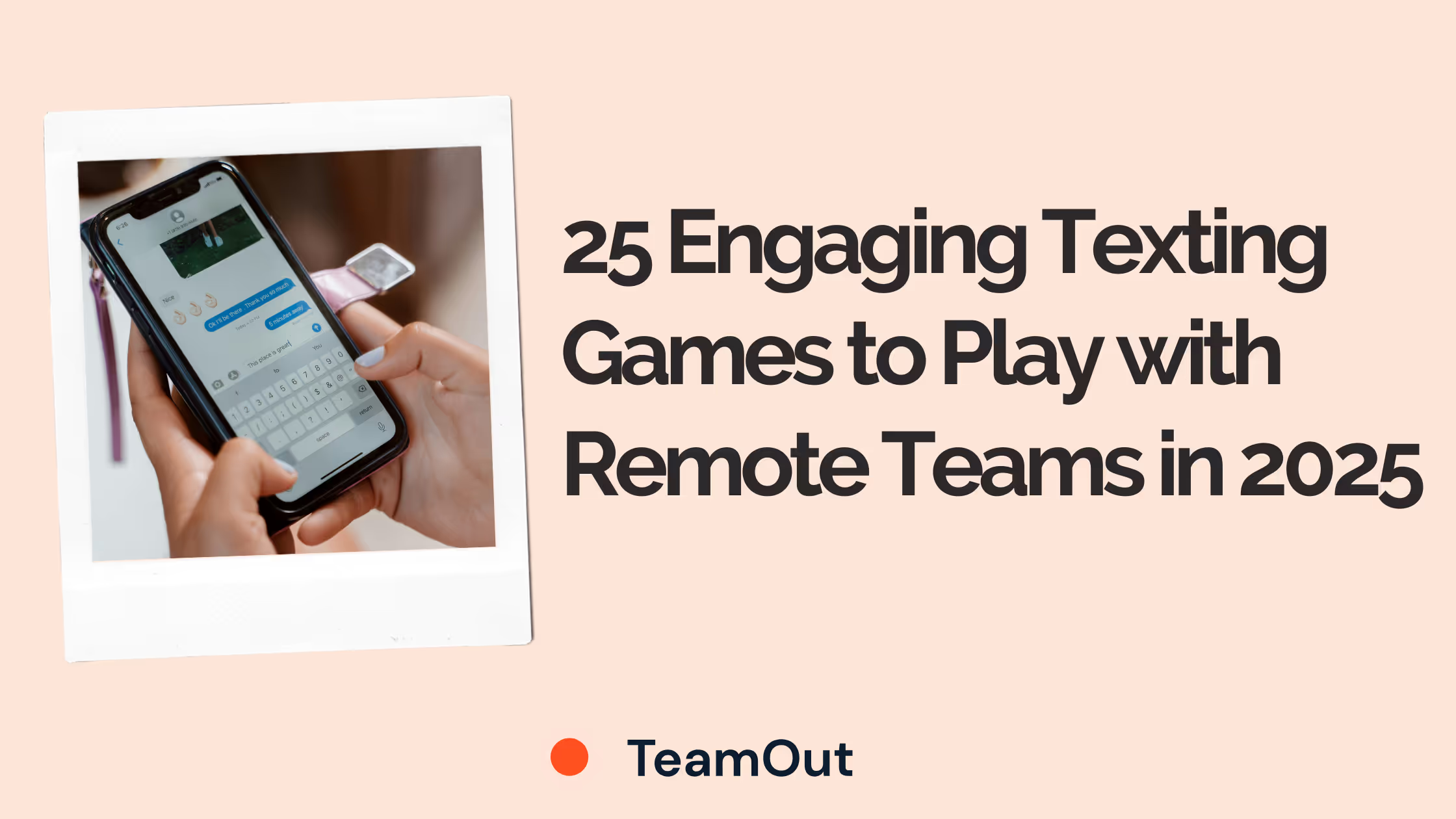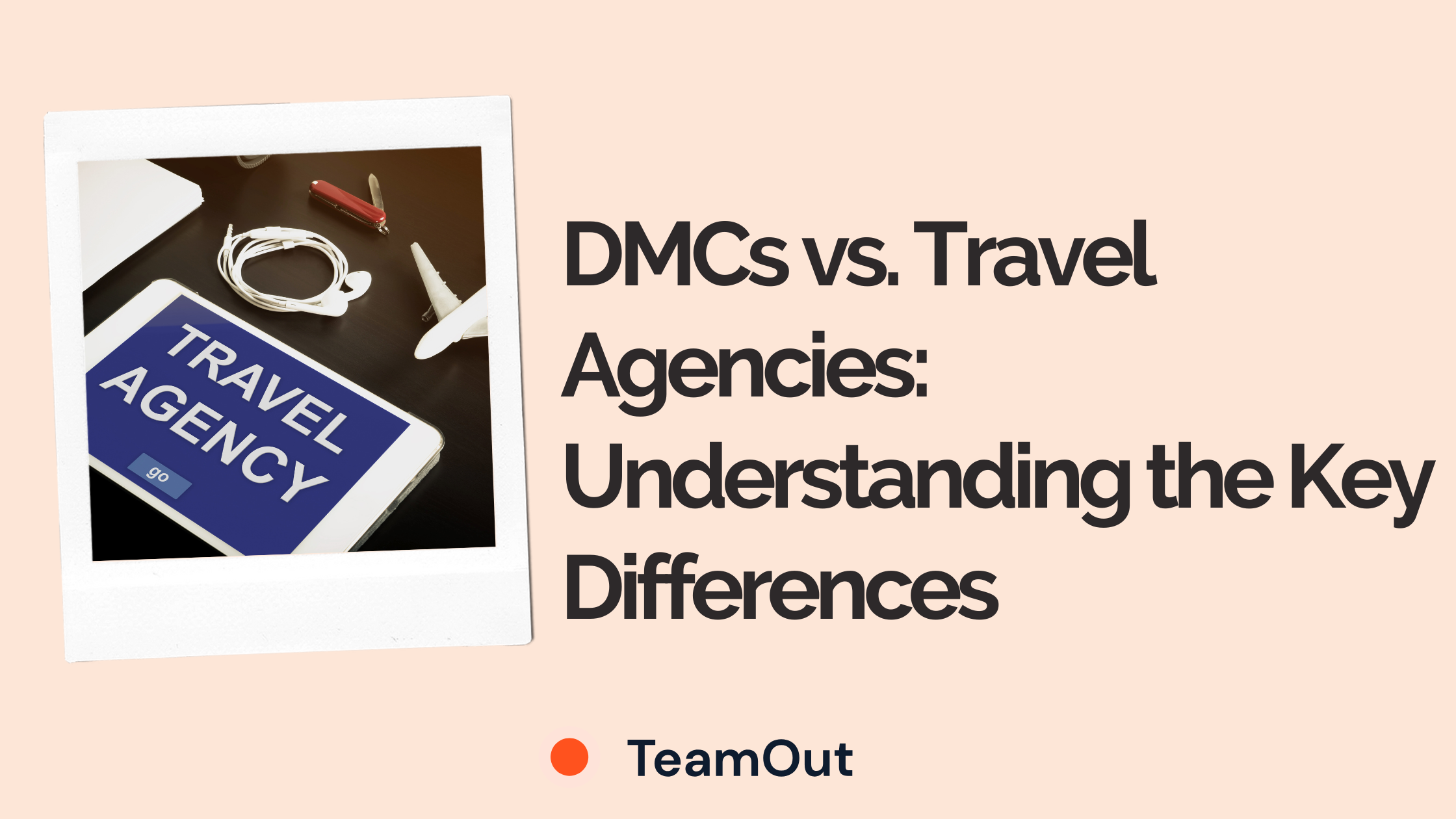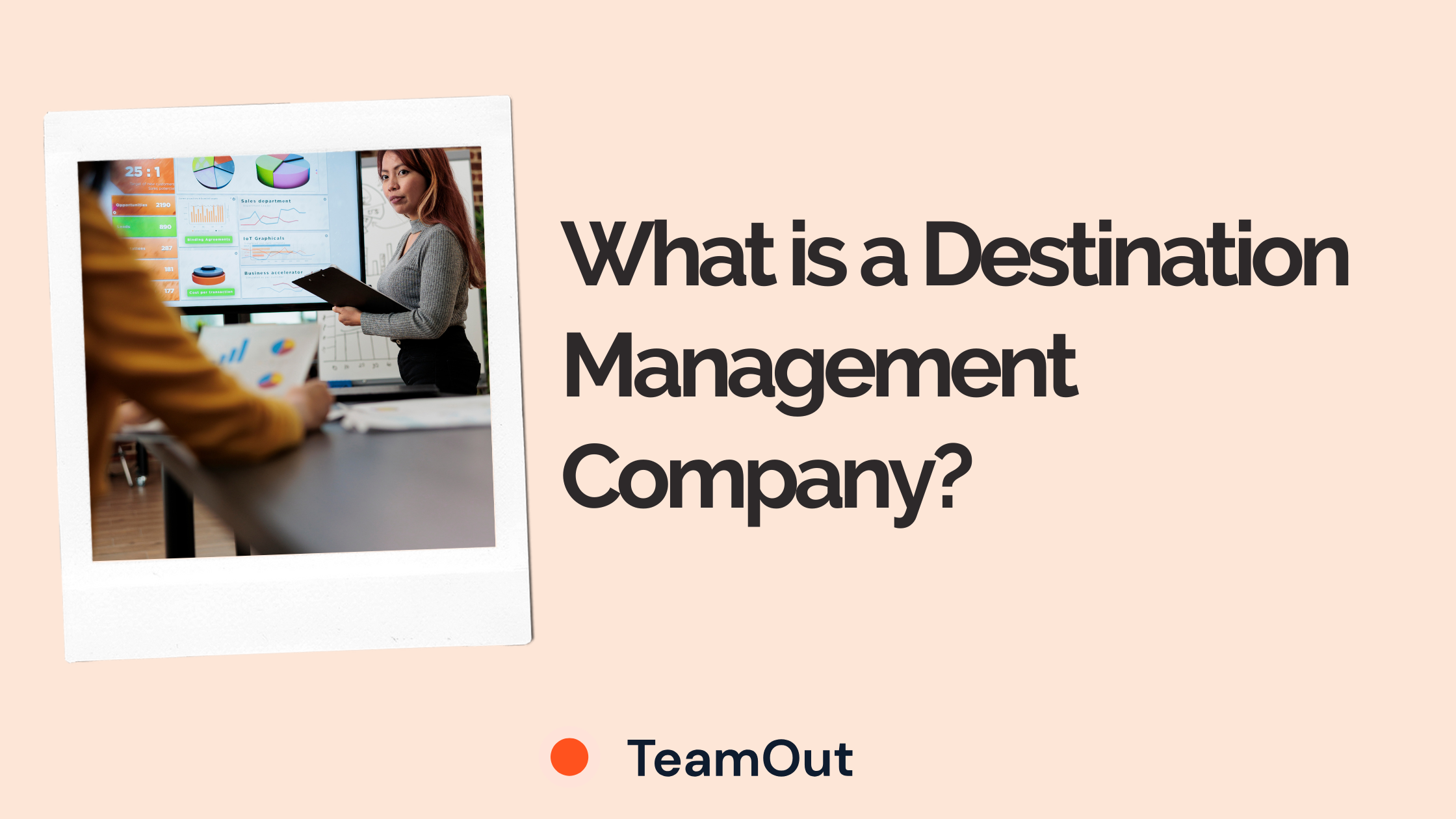Why Your Current Survey Probably Isn't Working (And How to Fix It)
If you're like most leaders I work with, you've probably been frustrated by engagement surveys that don't seem to predict anything useful. You get the results back, see some concerning scores, but struggle to know what actions will actually move the needle.
Here's the problem: most surveys ask questions that sound important but don't actually predict behavior. "Are you satisfied with your job?" sounds reasonable, right? But satisfaction and engagement are completely different. You've probably seen plenty of "satisfied" employees who were mentally checked out, just coasting until something better came along.
The breakthrough happens when you focus on what I call the IMPACT methodology. It's not just another acronym—it's how you separate surveys that gather dust from surveys that drive real change.
The IMPACT Method: Your Framework for Questions That Matter
- Intent-driven questions get to the heart of what your people are thinking and planning. Instead of "How do you feel about your manager?" try "My manager helps me understand how my work contributes to our team's success." See the difference? One measures feelings, the other measures the relationship that actually drives performance.
- Measurable benchmarks give your scores meaning. Without context, a 3.8 out of 5 is just a number. But when you know that 3.8 puts you in the bottom quartile for your industry, suddenly you've got a problem worth solving.
- Predictive power is where the magic happens. Every question in this guide has been tested against real business outcomes. You're not guessing—you know these questions correlate with retention, performance, and profitability because they've been tracked across hundreds of organizations.
- Actionable insights mean you know what to do with your results. It's one thing to know engagement is low; it's another to know exactly which interventions will move the needle.
- Continuous measurement keeps you ahead of problems instead of reacting to them. If you're only surveying annually, you're missing opportunities to course-correct before small issues become big problems.
- Tailored approaches recognize that your tech startup and a manufacturing plant need different questions. The core principles stay the same, but you'll want to adjust the specific language and focus areas based on your industry and culture.
Your Complete Question Bank: 50+ Validated Survey Questions
Category 1: Engagement Drivers (15 Questions)
When you're measuring engagement drivers, you're looking at the fundamental elements that make people want to give their best effort. These questions predict discretionary effort—the difference between someone doing the minimum and someone going above and beyond.
Pride & Advocacy
"I am proud to work for [Company Name]"
- Your Benchmark: 84-88% agreement (typical range)
- Red Flag: Below 79% indicates you have brand reputation concerns requiring immediate attention
- Excellence: Above 91% puts you in the top quartile
- What This Predicts: Glassdoor ratings (+0.7 correlation), employee referrals (+0.6), voluntary turnover (-0.8)
- Your Action Plan: If you're below 80%, you need an employer branding audit and culture assessment
- TeamOut Insight: When you combine pride measurement with our team building programs, you typically see 15% improvement through enhanced mission connection and peer recognition
"I would recommend [Company Name] as a great place to work."
- Your Benchmark: 78-85% agreement
- Red Flag: Below 70% means your employees won't refer quality candidates
- Excellence: Above 88% creates a talent magnet effect
- What This Predicts: Employee referral rates (+0.82), Glassdoor scores (+0.79), retention (+0.71)
- Your Action Plan: Below 75% requires immediate culture intervention and leadership development
"The work I do makes a difference."
- Your Benchmark: 81-87% agreement
- Red Flag: Below 75% indicates disconnection from purpose
- Excellence: Above 90% drives exceptional performance
- What This Predicts: Job performance (+0.68), innovation behaviors (+0.61), retention (+0.59)
- Your Action Plan: Low scores need role clarity sessions and impact storytelling
"I feel good about the ways we contribute to the community."
- Your Benchmark: 72-79% agreement
- Red Flag: Below 65% suggests values misalignment
- Excellence: Above 82% strengthens organizational commitment
- What This Predicts: Values alignment (+0.64), long-term commitment (+0.57)
- Your Action Plan: Enhance community involvement and social responsibility communication
"I can see how my job relates to the mission/purpose of my company."
- Your Benchmark: 79-85% agreement
- Red Flag: Below 72% means people don't understand their impact
- Excellence: Above 88% creates intrinsic motivation
- What This Predicts: Job satisfaction (+0.73), performance (+0.66), retention (+0.62)
- Your Action Plan: Implement regular "impact sessions" showing how individual work connects to the bigger picture
"My company's reputation makes me proud to say I work here."
- Your Benchmark: 76-83% agreement
- Red Flag: Below 70% indicates external reputation concerns
- Excellence: Above 86% enhances recruitment and retention
- What This Predicts: Employee advocacy (+0.71), referral quality (+0.68)
- Your Action Plan: Focus on external brand building and internal communication about company achievements
"I believe in the goals and objectives of my organization."
- Your Benchmark: 82-88% agreement
- Red Flag: Below 75% suggests strategic communication gaps
- Excellence: Above 91% drives aligned execution
- What This Predicts: Goal achievement (+0.69), strategic alignment (+0.65)
- Your Action Plan: Enhance strategic communication and goal-setting processes
"My organization's values are consistent with my values."
- Your Benchmark: 74-81% agreement
- Red Flag: Below 67% indicates cultural misfit risk
- Excellence: Above 84% creates strong cultural bonds
- What This Predicts: Cultural fit (+0.76), long-term retention (+0.71)
- Your Action Plan: Values clarification workshops and hiring process refinement
Commitment & Motivation
Commitment Questions:
"I rarely think about looking for a job at another company."
- Your Benchmark: 68-75% agreement
- Red Flag: Below 60% means active job searching
- Excellence: Above 78% indicates strong retention
- What This Predicts: 12-month retention (+0.84), performance stability (+0.61)
- Your Action Plan: Below 65% requires an immediate retention strategy and stay interviews
"It would take a lot to get me to leave this company."
- Your Benchmark: 71-78% agreement
- Red Flag: Below 63% suggests weak organizational attachment
- Excellence: Above 81% creates retention stability
- What This Predicts: Voluntary turnover (-0.79), commitment behaviors (+0.67)
- Your Action Plan: Focus on strengthening emotional connection and career development
"I see myself working here in two years."
- Your Benchmark: 72-79% agreement
- Red Flag: Below 65% indicates retention risk
- Excellence: Above 82% predicts long-term stability
- What This Predicts: 24-month retention (+0.86), career investment (+0.71)
- Your Action Plan: Career pathing conversations and development planning
"I am willing to put in extra effort to help this organization succeed."
- Your Benchmark: 85-91% agreement
- Red Flag: Below 78% suggests low discretionary effort
- Excellence: Above 94% drives exceptional performance
- What This Predicts: Discretionary effort (+0.81), team performance (+0.69)
- Your Action Plan: Recognition programs and meaningful work assignments
"I feel a strong sense of belonging to my organization."
- Your Benchmark: 76-83% agreement
- Red Flag: Below 69% indicates inclusion issues
- Excellence: Above 86% creates psychological safety
- What This Predicts: Inclusion behaviors (+0.74), team cohesion (+0.68)
- Your Action Plan: Belonging initiatives and inclusive leadership training
Motivation Questions:
"I have the opportunity to do what I do best every day."
- Your Benchmark: 68-75% agreement
- Red Flag: Below 60% means talent underutilization
- Excellence: Above 78% maximizes individual contribution
- What This Predicts: Individual performance (+0.71), job satisfaction (+0.69)
- Your Action Plan: Strengths assessment and role optimization
"I am motivated to go beyond what is expected in my job."
- Your Benchmark: 79-86% agreement
- Red Flag: Below 72% suggests motivational issues
- Excellence: Above 89% drives innovation and growth
- What This Predicts: Performance ratings (+0.73), innovation behaviors (+0.66)
- Your Action Plan: Intrinsic motivation enhancement and autonomy increase
Category 2: Leadership Effectiveness (9 Questions)
Your leadership effectiveness scores are among the strongest predictors of overall engagement. When people trust their leaders and feel supported by management, every other metric improves. Here's how to measure what matters most.
Executive Leadership
"I have confidence in the leadership of this organization."
- Your Benchmark: 74-81% agreement
- Red Flag: Below 67% indicates a leadership credibility crisis
- Excellence: Above 84% creates organizational stability
- What This Predicts: Overall engagement (+0.78), retention (+0.71), performance (+0.64)
- Your Action Plan: Leadership development and transparent communication strategy
"Senior leadership effectively communicates the organization's strategy."
- Your Benchmark: 71-78% agreement
- Red Flag: Below 64% means strategic confusion
- Excellence: Above 81% aligns execution with strategy
- What This Predicts: Strategic alignment (+0.72), goal achievement (+0.68)
- Your Action Plan: Communication training for leaders and regular strategy sessions
"Senior leadership demonstrates a commitment to our organization's values."
- Your Benchmark: 76-83% agreement
- Red Flag: Below 69% suggests values-behavior gap
- Excellence: Above 86% reinforces cultural integrity
- What This Predicts: Trust in leadership (+0.79), values alignment (+0.73)
- Your Action Plan: Leadership accountability systems and values-based decision making
"I trust senior leadership to make the right decisions for the organization."
- Your Benchmark: 69-76% agreement
- Red Flag: Below 62% indicates a trust deficit
- Excellence: Above 79% enables change agility
- What This Predicts: Change acceptance (+0.74), organizational commitment (+0.69)
- Your Action Plan: Transparency initiatives and decision-making communication
"Senior leadership keeps employees informed about what is happening."
- Your Benchmark: 68-75% agreement
- Red Flag: Below 61% creates an information vacuum
- Excellence: Above 78% builds trust and engagement
- What This Predicts: Trust levels (+0.71), rumor reduction (-0.66)
- Your Action Plan: Regular communication cadence and multiple channel strategy
Manager Quality
"My manager cares about me as a person."
- Your Benchmark: 77-84% agreement
- Red Flag: Below 70% indicates relationship deficit
- Excellence: Above 87% creates psychological safety
- What This Predicts: Employee wellbeing (+0.76), retention (+0.72), performance (+0.68)
- Your Action Plan: Manager coaching on personal connection and empathy skills
"My manager provides me with constructive feedback to help me improve my performance."
- Your Benchmark: 72-79% agreement
- Red Flag: Below 65% means development stagnation
- Excellence: Above 82% accelerates growth
- What This Predicts: Performance improvement (+0.74), skill development (+0.69)
- Your Action Plan: Feedback training and regular coaching conversations
"My manager recognizes my contributions and accomplishments."
- Your Benchmark: 74-81% agreement
- Red Flag: Below 67% creates recognition gaps
- Excellence: Above 84% drives motivation
- What This Predicts: Job satisfaction (+0.77), discretionary effort (+0.71)
- Your Action Plan: Recognition training and appreciation systems
"My manager helps me understand how my work contributes to the organization's success."
- Your Benchmark: 76-83% agreement
- Red Flag: Below 69% indicates purposeful disconnection
- Excellence: Above 86% creates meaning
- What This Predicts: Job meaning (+0.73), performance (+0.67)
- Your Action Plan: Purpose-driven conversations and impact storytelling
Category 3: Growth & Development (3 Questions)
Your people's growth aspirations are directly tied to their retention and performance. When you invest in development, you're not just building skills—you're building loyalty and engagement.
Career Advancement
"I have opportunities for career advancement within this organization."
- Your Benchmark: 65-72% agreement
- Red Flag: Below 58% drives talent exodus
- Excellence: Above 75% retains high performers
- What This Predicts: Retention (+0.79), internal mobility (+0.74), performance (+0.66)
- Your Action Plan: Career pathing programs and succession planning
"My organization provides clear career paths."
- Your Benchmark: 61-68% agreement
- Red Flag: Below 54% creates career uncertainty
- Excellence: Above 71% enables career planning
- What This Predicts: Career satisfaction (+0.72), long-term commitment (+0.68)
- Your Action Plan: Career framework development and communication
Learning Access
"I have access to the learning and development I need to do my job well."
- Your Benchmark: 73-80% agreement
- Red Flag: Below 66% limits performance potential
- Excellence: Above 83% maximizes capability
- What This Predicts: Skill development (+0.71), job performance (+0.67)
- Your Action Plan: Learning needs assessment and resource allocation
Category 4: Work Environment (10 Questions)
Your work environment encompasses everything from team dynamics to physical workspace. These factors significantly impact daily experience and long-term satisfaction.
Team Dynamics
"I can count on my coworkers to help when I need it."
- Your Benchmark: 81-88% agreement
- Red Flag: Below 74% indicates team dysfunction
- Excellence: Above 91% creates high-performing teams
- What This Predicts: Team performance (+0.73), collaboration (+0.69), job satisfaction (+0.65)
Your Action Plan: Team building interventions and collaboration skill development
- TeamOut Insight: Our team-building programs specifically target collaboration behaviors, typically improving this score by 18-22% through structured trust-building exercises
"The people I work with cooperate to get the job done."
- Your Benchmark: 83-90% agreement
- Red Flag: Below 76% suggests coordination problems
- Excellence: Above 93% enables seamless execution
- What This Predicts: Project success rates (+0.71), team efficiency (+0.68)
- Your Action Plan: Process improvement and team coordination training
"I feel comfortable expressing my opinions at work."
- Your Benchmark: 72-79% agreement
- Red Flag: Below 65% indicates psychological safety issues
- Excellence: Above 82% fosters innovation
- What This Predicts: Innovation behaviors (+0.69), problem-solving (+0.64)
- Your Action Plan: Psychological safety workshops and open communication training
"Conflicts are resolved fairly in my work group."
- Your Benchmark: 68-75% agreement
- Red Flag: Below 61% means unresolved tensions
- Excellence: Above 78% maintains team health
- What This Predicts: Team cohesion (+0.66), stress levels (-0.62)
- Your Action Plan: Conflict resolution training and mediation processes
"My team works well together."
- Your Benchmark: 79-86% agreement
- Red Flag: Below 72% requires team intervention
- Excellence: Above 89% drives exceptional results
- What This Predicts: Team performance (+0.74), collective efficacy (+0.69)
- Your Action Plan: Team effectiveness assessment and targeted interventions
Culture Alignment
"My organization's culture supports the way I like to work."
- Your Benchmark: 71-78% agreement
- Red Flag: Below 64% indicates cultural misfit
- Excellence: Above 81% creates cultural harmony
- What This Predicts: Cultural fit (+0.73), job satisfaction (+0.68)
- Your Action Plan: Culture clarification and adaptation strategies
"People in my organization live our values."
- Your Benchmark: 69-76% agreement
- Red Flag: Below 62% suggests values-behavior gap
- Excellence: Above 79% reinforces cultural integrity
- What This Predicts: Trust (+0.71), values alignment (+0.67)
- Your Action Plan: Values reinforcement and accountability systems
"I feel like I belong at this organization."
- Your Benchmark: 74-81% agreement
- Red Flag: Below 67% indicates inclusion issues
- Excellence: Above 84% creates a strong belonging
- What This Predicts: Retention (+0.76), engagement (+0.72)
- Your Action Plan: Inclusion initiatives and belonging programs
Workplace Quality
"I have the tools and resources I need to do my job effectively."
- Your Benchmark: 76-83% agreement
- Red Flag: Below 69% limits productivity
- Excellence: Above 86% enables peak performance
- What This Predicts: Productivity (+0.69), job satisfaction (+0.65)
- Your Action Plan: Resource audit and investment planning
"My physical work environment enables me to do my job well."
- Your Benchmark: 73-80% agreement
- Red Flag: Below 66% creates daily friction
- Excellence: Above 83% supports optimal performance
- What This Predicts: Daily satisfaction (+0.64), productivity (+0.61)
- Your Action Plan: Workspace optimization and ergonomic improvements
Category 5: Recognition & Rewards (5 Questions)
Recognition isn't just about feeling good—it's about reinforcing the behaviors that drive your business results. When you get recognition right, you'll see immediate improvements in motivation and performance.
Performance Recognition
"I receive recognition when I do good work."
- Your Benchmark: 71-78% agreement
- Red Flag: Below 64% creates motivation gaps
- Excellence: Above 81% drives continued excellence
- What This Predicts: Motivation (+0.74), repeat performance (+0.69), retention (+0.66)
- Your Action Plan: Recognition system overhaul and manager training
- TeamOut Insight: When you combine recognition measurement with our team-building activities, you create peer-to-peer appreciation that sustains motivation beyond formal programs
"My contributions are valued by my organization."
- Your Benchmark: 73-80% agreement
- Red Flag: Below 66% suggests undervaluation
- Excellence: Above 83% creates a strong commitment
- What This Predicts: Organizational commitment (+0.72), discretionary effort (+0.68)
- Your Action Plan: Value communication and contribution highlighting
"Recognition is given when earned, regardless of position or tenure."
- Your Benchmark: 67-74% agreement
- Red Flag: Below 60% indicates recognition bias
- Excellence: Above 77% ensures fairness
- What This Predicts: Fairness perceptions (+0.69), trust (+0.65)
- Your Action Plan: Recognition, equity audit, and bias training
Compensation & Benefits
"I am paid fairly for the work I do."
- Your Benchmark: 68-75% agreement
- Red Flag: Below 61% drives turnover risk
- Excellence: Above 78% reduces pay-related departures
- What This Predicts: Retention (+0.71), job satisfaction (+0.67)
- Your Action Plan: Compensation analysis and market benchmarking
"My benefits package meets my needs."
- Your Benchmark: 72-79% agreement
- Red Flag: Below 65% suggests benefit gaps
- Excellence: Above 82% enhances total rewards satisfaction
- What This Predicts: Total rewards satisfaction (+0.68), retention (+0.64)
- Your Action Plan: Benefits assessment and customization options
Category 6: Work-Life Integration (5 Questions)
Work-life balance isn't just a nice-to-have anymore—it's a retention and performance driver. Your people need to feel they can succeed at work without sacrificing their personal lives.
Flexibility & Autonomy
"I have flexibility in when I work."
- Your Benchmark: 69-76% agreement (varies significantly by industry)
- Red Flag: Below 62% in knowledge work indicates rigidity issues
- Excellence: Above 79% enables optimal performance timing
- What This Predicts: Work-life balance (+0.73), job satisfaction (+0.68), retention (+0.64)
- Your Action Plan: Flexible work policy development and manager training
"I have control over how I do my work."
- Your Benchmark: 74-81% agreement
- Red Flag: Below 67% suggests micromanagement
- Excellence: Above 84% enables autonomy and innovation
- What This Predicts: Job satisfaction (+0.71), innovation (+0.66), performance (+0.63)
- Your Action Plan: Autonomy enhancement and trust-building initiatives
"My workload is reasonable."
- Your Benchmark: 66-73% agreement
- Red Flag: Below 59% indicates burnout risk
- Excellence: Above 76% enables sustainable performance
- What This Predicts: Burnout prevention (-0.74), performance sustainability (+0.67)
- Your Action Plan: Workload analysis and resource reallocation
Wellbeing & Support
"I can manage my stress level at work."
- Your Benchmark: 64-71% agreement
- Red Flag: Below 57% indicates a stress crisis
- Excellence: Above 74% supports mental health
- What This Predicts: Mental health (+0.72), performance consistency (+0.66)
- Your Action Plan: Stress management programs and workload optimization
"My organization cares about my well-being."
- Your Benchmark: 68-75% agreement
- Red Flag: Below 61% suggests wellbeing neglect
- Excellence: Above 78% demonstrates genuine care
- What This Predicts: Organizational commitment (+0.69), health outcomes (+0.64)
- Your Action Plan: Wellbeing program development and communication
Category 7: Inclusion & Belonging (5 Questions)
Inclusion isn't just about diversity—it's about creating an environment where everyone can contribute their best work. These questions help you measure whether your people feel truly valued and included.
Psychological Safety
"I feel safe to express my ideas and opinions at work."
- Your Benchmark: 71-78% agreement
- Red Flag: Below 64% stifles innovation and engagement
- Excellence: Above 81% enables breakthrough thinking
- What This Predicts: Innovation behaviors (+0.73), problem identification (+0.68), team learning (+0.65)
- Your Action Plan: Psychological safety training and open dialogue facilitation
"I can be myself at work."
- Your Benchmark: 73-80% agreement
- Red Flag: Below 66% indicates authenticity barriers
- Excellence: Above 83% enables full contribution
- What This Predicts: Engagement (+0.71), well-being (+0.67), retention (+0.64)
- Your Action Plan: Authenticity workshops and inclusive leadership development
"Mistakes are treated as learning opportunities."
- Your Benchmark: 67-74% agreement
- Red Flag: Below 60% creates a fear-based culture
- Excellence: Above 77% fosters innovation
- What This Predicts: Risk-taking (+0.69), learning agility (+0.66)
- Your Action Plan: Learning culture development and failure celebration
Diversity & Equity (5 Questions)
"People are treated fairly regardless of their background."
- Your Benchmark: 75-82% agreement
- Red Flag: Below 68% indicates equity issues
- Excellence: Above 85% creates an inclusive environment
- What This Predicts: Inclusion (+0.74), trust (+0.69), retention (+0.66)
- Your Action Plan: Equity audit and bias interruption training
"Different perspectives are valued in my workplace."
- Your Benchmark: 72-79% agreement
- Red Flag: Below 65% suggests homogeneous thinking
- Excellence: Above 82% leverages diversity advantage
- What This Predicts: Innovation (+0.68), decision quality (+0.64)
- Your Action Plan: Perspective-seeking behaviors and diverse team formation
Your Next Steps: From Insight to Action
You now have everything you need to measure engagement in a way that predicts business outcomes. But measurement without action is just expensive data collection.
Immediate Actions You Can Take:
This Week:
Select 40-50 questions from this guide that align with your biggest engagement challenges
Set up your survey platform and plan your communication strategy
Block time in your calendar for results analysis and action planning
Next Month:
Deploy your survey and track participation rates daily
Analyze results against the benchmarks provided
Identify your top 3-4 priority areas for improvement
Next Quarter:
Implement targeted interventions for your priority areas
Consider team building experiences that address your specific engagement gaps
Plan your follow-up pulse survey to measure progress
Getting Expert Support
If you're feeling overwhelmed by the scope of engagement improvement, you're not alone. Most organizations struggle to translate survey insights into effective action plans.
TeamOut specializes in helping companies bridge this gap. We can help you design your survey strategy, interpret your results, and create team experiences that directly address your engagement challenges.
Whether you need help with survey design, results interpretation, or creating the team experiences that drive lasting improvement, we're here to support your journey from measurement to transformation.
The Bottom Line: Engagement That Drives Results
Employee engagement isn't just about making people happy at work—it's about creating the conditions where your people can do their best work, stay with your organization, and contribute to your success.
The questions in this guide have been tested across hundreds of organizations and thousands of employees. They predict the outcomes that matter: retention, performance, innovation, and profitability.
But questions alone don't create change. You need to be prepared to act on what you learn, to invest in the improvements your people need, and to create the experiences that build genuine engagement.
When you combine rigorous measurement with targeted action, you don't just improve survey scores—you transform your organization into a place where people genuinely want to work, grow, and contribute their best efforts.
That's the kind of engagement that drives real business results. And that's exactly what your organization deserves.
Ready to get started? Download our complete survey question bank and implementation checklist, or contact TeamOut to discuss how we can help you turn engagement insights into organizational transformation.
















.webp)


